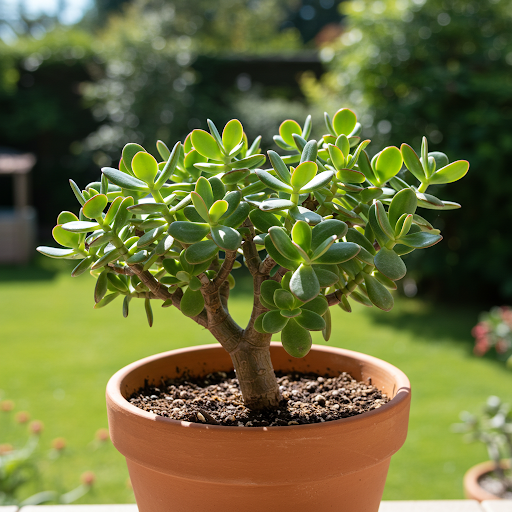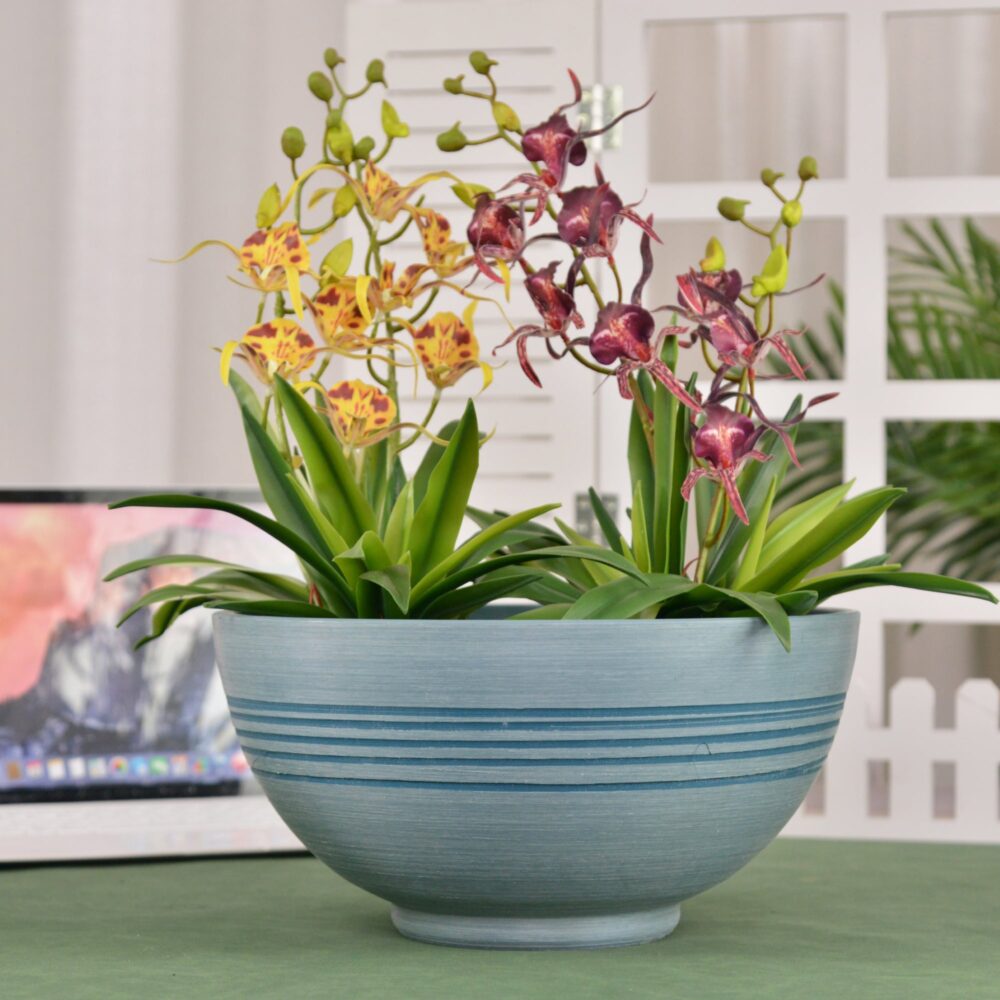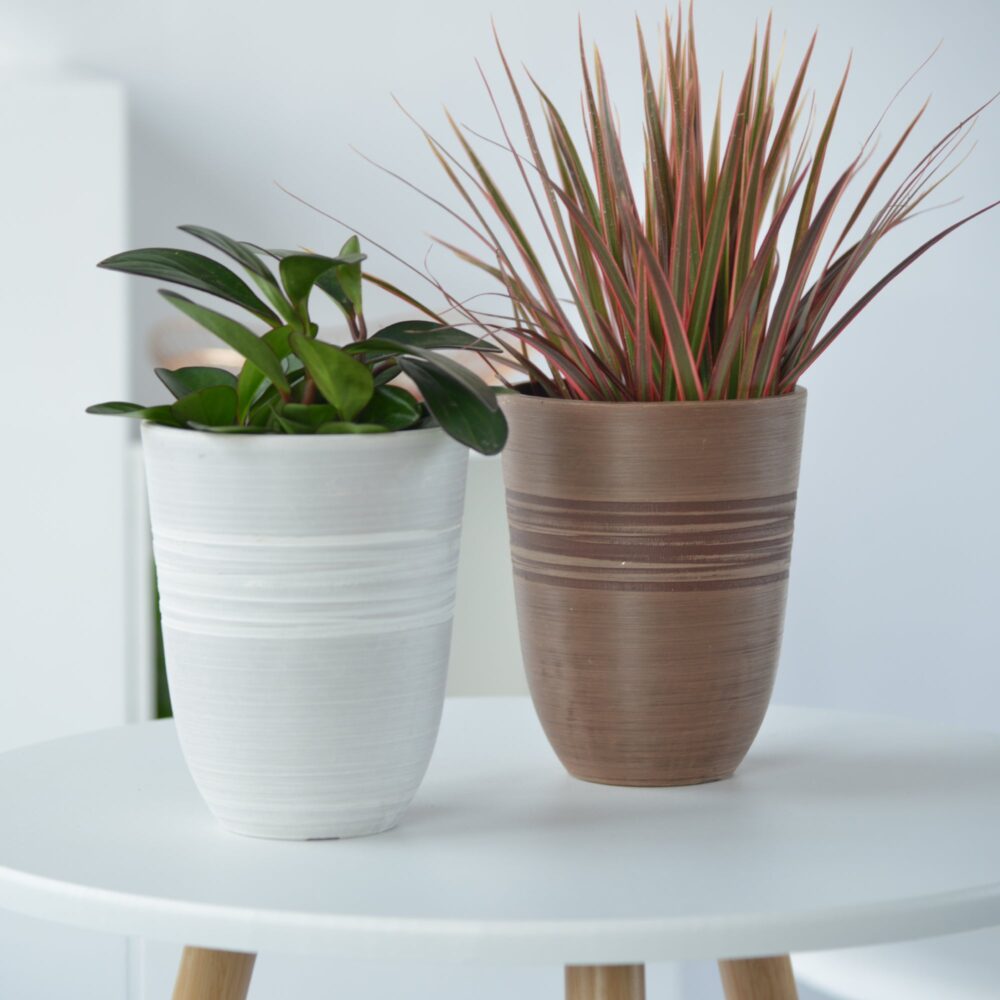Elephant Bush in Pots: The Complete Guide to Growing Portulacaria Afra Outdoors in Containers (Easy Succulent!)
Want to add a touch of drought-tolerant greenery and architectural interest to your patio, balcony, or garden? Growing Elephant Bush (Portulacaria afra) in containers is a wonderfully easy and stylish way to incorporate this fascinating succulent into your outdoor spaces. Celebrated for its small, jade-like leaves, its reddish stems, its sculptural growth habit, its low-maintenance nature, and its adaptability to container gardening, Elephant Bush (also known as Porkbush or Spekboom, and 金枝玉叶 in Chinese) is perfect for adding a touch of the arid landscape to your outdoor living areas. This comprehensive guide will provide you with everything you need to know to grow Portulacaria afra successfully in outdoor pots, from selecting the right cuttings or plants and containers to mastering essential care techniques for a thriving and visually striking display.

Elephant Bush
What is Elephant Bush (Portulacaria Afra)?
Elephant Bush, scientifically known as Portulacaria afra, is a popular succulent shrub or small tree belonging to the Didiereaceae family (though sometimes placed in Portulacaceae). Native to South Africa, it is widely cultivated as an ornamental plant, both indoors and outdoors, prized for its drought tolerance, attractive foliage, interesting texture, ease of propagation, and suitability for bonsai. Elephant Bush plants are characterized by their woody, reddish-brown stems, small, rounded, succulent leaves that are typically bright green but can vary in color depending on the cultivar (variegated forms are also popular), and a naturally sculptural, branching growth habit. In their native habitat, they can grow into small trees up to 15 feet tall, but when grown in containers, they are typically maintained as smaller shrubs, usually between 1 to 4 feet tall. They are known for their exceptional drought tolerance, ease of care, interesting texture and form, longevity, and adaptability to container culture, making them a popular choice for succulent gardens, rock gardens, patios, and balconies, especially in warm, dry climates or for those seeking low-water gardening options. In Chinese culture, it is known as 金枝玉叶 (Jīnzhīyùyè), meaning “golden branch jade leaves,” reflecting its valued ornamental qualities.
Is Elephant Bush (Portulacaria Afra) Good for Outdoor Pots?
Yes, Elephant Bush is exceptionally well-suited for outdoor pots and container gardening, and is in fact one of the best succulents for container cultivation. Its drought tolerance, manageable size, slow growth rate, architectural form, and adaptability to pot culture make it ideal for container gardens. Growing Elephant Bush in pots offers several advantages:
- Excellent Drought Tolerance: Elephant Bush is highly drought-tolerant, making it perfect for water-wise gardening and for container culture where watering can be less frequent.
- Portability: Potted Elephant Bush can be easily moved to optimal locations for sunlight, display, or shelter from extreme weather (though it is quite hardy). You can rearrange them to create different looks in your outdoor spaces.
- Controlled Environment: Container gardening allows you to provide the fast-draining soil mix that Elephant Bush requires and control watering and fertilization precisely.
- Design Versatility: Elephant Bush works beautifully as a specimen plant in a decorative pot, or as part of a mixed succulent container arrangement, adding unique texture and form.
- Pest and Disease Management: Container growing can help reduce some soilborne pest and disease issues that can affect Elephant Bush planted directly in the ground.
- Ideal for Patios and Balconies: Elephant Bush in pots is perfect for adding a sculptural, low-water element to patios, balconies, and other outdoor living spaces, especially in sunny, warm locations.
- Cold Climate Flexibility: In regions with cold winters, potted Elephant Bush can be easily moved indoors to protect them from frost and freezing temperatures, and then brought back outdoors in warmer months. (Though this is less of a concern in Singapore’s climate).
Ideal Growing Conditions for Elephant Bush (Portulacaria Afra) in Pots:
Light: Elephant Bush thrives in bright sunlight. When grown outdoors, it appreciates full sun for most of the day. It can tolerate partial shade, especially in very hot, intense summer climates, but full sun promotes the best growth, most compact form, and richest foliage color. Choose a sunny location for your Elephant Bush containers, such as a south-facing patio, balcony, or garden. Inadequate light can lead to etiolation (leggy, stretched growth) and less vibrant color.
Soil: Elephant Bush requires fast-draining soil that is typical for succulents and cacti. Use a high-quality cactus and succulent potting mix. You can further amend this mix with perlite, pumice, or coarse sand to enhance drainage even more. Excellent drainage is absolutely crucial to prevent root rot, which is the most common problem with Elephant Bush. Avoid regular potting soil or garden soil, as these retain too much moisture. A slightly acidic to neutral pH (around 6.0-7.0) is ideal.
Watering: Elephant Bush is very drought-tolerant and prefers infrequent but thorough watering. Allow the soil to dry out completely between waterings. When watering, water deeply until water drains freely from the drainage holes. Then, allow the soil to become completely dry before watering again. Overwatering is the biggest risk for Elephant Bush and can quickly lead to root rot. During the active growing season (spring and summer), you may water every 1-3 weeks, depending on weather conditions and pot size. In the dormant season (fall and winter), reduce watering significantly, watering perhaps once a month or even less, only enough to prevent the leaves from shriveling excessively. In Singapore’s humid climate, ensure pots are not sitting in standing water after rain. Err on the side of underwatering.
Temperature: Elephant Bush thrives in warm temperatures, ideally between 65-80°F (18-27°C) during the growing season. It is relatively tolerant of higher temperatures and heat, making it well-suited to Singapore’s climate. While it can tolerate mildly cool temperatures in winter (down to about 40°F or 4°C) if kept dry, it is not frost-hardy. In Singapore, temperature is generally ideal year-round. Avoid prolonged exposure to freezing temperatures if you are in a region with frost risk.
Humidity: Elephant Bush is adapted to arid and semi-arid environments and prefers low humidity. Singapore’s humidity might be higher than its ideal, but Elephant Bush is adaptable. Ensure good air circulation around the plant and avoid overly humid microclimates. Good drainage and proper watering are even more important in humid climates to prevent root rot.
Fertilizer: Elephant Bush is not a heavy feeder and generally does not require frequent fertilization, especially when grown in pots. Over-fertilizing can lead to weak, leggy growth. If desired, you can apply a very dilute, balanced fertilizer (e.g., 10-10-10) once or twice during the active growing season (spring/summer). Dilute the fertilizer to half or even quarter strength of the recommended dosage for typical houseplants. Alternatively, you can use a cactus and succulent fertilizer according to label directions, but still use it sparingly. Avoid high-nitrogen fertilizers. Fertilizing is often optional, especially if you repot annually into fresh succulent mix.
Choosing the Right Pots for Elephant Bush (Portulacaria Afra):
Suitable Pot Types: Drainage is the most critical factor when choosing pots for Elephant Bush. Pot types that promote good drainage and aeration are best:
- Terracotta Pots: Terracotta is an excellent choice for Elephant Bush. It is porous, allowing for excellent aeration and drainage, and helps the soil dry out quickly, which succulents prefer. Terracotta also provides a classic, earthy look that complements succulents.
- Unglazed Ceramic Pots: Unglazed ceramic pots offer similar breathability to terracotta and are a good option.
- Clay Pots: Similar to terracotta, clay pots promote good drainage and aeration.
- Plastic Pots (with caution): Plastic pots can be used, but they retain more moisture than terracotta. If using plastic, be extra vigilant about watering and ensure the potting mix is very fast-draining. You might consider adding even more perlite or pumice to the mix when using plastic pots.
- Avoid Glazed Ceramic or Metal Pots (unless drainage is excellent): Glazed ceramic pots and metal pots can retain too much moisture and may not be ideal unless you are very careful with watering and ensure exceptional drainage and very fast-draining soil.
Drainage: Excellent drainage is non-negotiable for Elephant Bush. Ensure your chosen pot has at least one, and preferably multiple, drainage holes at the bottom. Avoid pots without drainage holes. Always use a drainage layer at the base of the pot (e.g., a layer of gravel, pot shards, or clay pebbles) beneath the potting mix to further enhance drainage. Elevating pots slightly on pot feet or bricks can also improve drainage and air circulation.
Pot Size: Choose pot sizes appropriate for the size of your Elephant Bush and your desired aesthetic. Elephant Bush is a slow-grower and doesn’t need frequent repotting.
- Small to Medium Pots (Most Common): For most Elephant Bush plants, especially younger or smaller specimens, pots that are 6-12 inches in diameter are generally suitable. The pot should be proportionate to the size of the plant.
- Larger Pots (Mature Specimens or Group Plantings): For larger, more mature Elephant Bush plants, or for creating larger container arrangements with multiple plants, you can use pots that are 14 inches in diameter or larger.
- Depth: Pot depth is less critical than drainage, but choose pots that are at least 6-8 inches deep to accommodate the root system.
Stability: Elephant Bush is not typically top-heavy, but for larger, more mature specimens, especially if placed in windy locations, using slightly heavier pots (terracotta or sturdy ceramic) can provide added stability.
Color and Style: Choose pot colors and styles that complement the green foliage and reddish stems of Elephant Bush and your outdoor décor, and enhance its sculptural, arid appearance. Earthy tones like terracotta, brown, beige, sandy colors, or muted greens often work well, enhancing the natural, desert-like aesthetic. Gray or concrete-look pots can create a modern, minimalist style. Brightly colored pots can also be used for a more vibrant contrast. Consider the overall style of your patio or balcony and choose pots that harmonize with the surroundings and enhance the desired desert or succulent garden ambiance.
Essential Care Tips for Thriving Elephant Bush (Portulacaria Afra) in Outdoor Pots:
- Watering: “Water Sparingly, Allow Soil to Dry Completely Between Waterings”. Water deeply but infrequently, only when the soil is completely dry. Avoid overwatering at all costs. Reduce watering significantly in fall and winter.
- Sunlight: Provide Full Sun for Best Growth and Color. Place Elephant Bush pots in a location that receives full sun for most of the day.
- Fertilizing: Fertilize Very Sparingly, Once or Twice a Year (Optional). Fertilize lightly, if at all, only once or twice during the growing season with a very dilute balanced or succulent fertilizer. Over-fertilizing is worse than under-fertilizing.
- Pruning (Shape and Size): Prune Elephant Bush as desired to maintain shape, control size, or encourage branching. Pruning can be done at any time of year, but is often best in spring or summer. It responds well to pruning and can be shaped into various forms, including bonsai styles.
- Propagation (Easy from Cuttings): Elephant Bush is very easy to propagate from stem cuttings. Cuttings root readily in well-draining soil. This is a great way to create more plants or replace older ones.
- Winter Care (Protect from Frost if Necessary): In Singapore, no winter protection is needed. In regions with frost, move potted Elephant Bush indoors to a bright, cool location during winter, or provide frost protection outdoors.
Popular Elephant Bush Cultivars (and Varieties):
- Portulacaria afra ‘Green’ (Typical Form): The standard, classic Elephant Bush with bright green leaves and reddish stems.
- Portulacaria afra ‘Variegata’ (Variegated Elephant Bush): Features green leaves with creamy white or yellow variegation. Adds extra visual interest. Several variegated cultivars exist with varying degrees of variegation.
- Portulacaria afra ‘Minima’ (Dwarf Elephant Bush): A smaller, more compact variety, ideal for smaller pots or bonsai.
- Portulacaria afra ‘Prostrata’ (Trailing Elephant Bush): Has a more spreading, trailing habit, suitable for hanging baskets or cascading over pot edges.
- Portulacaria afra ‘Aurea’ (Golden Elephant Bush): Features golden-yellow foliage, especially when grown in bright sunlight.
In Summary:
Growing Elephant Bush (Portulacaria afra) in outdoor pots is a wonderfully easy and rewarding way to add a touch of sculptural, drought-tolerant beauty to your patio, balcony, or garden. Their unique texture, low-maintenance nature, and adaptability to containers make them a perfect choice for container gardeners of all levels, especially those in warm, sunny climates or those seeking water-wise gardening options. By providing full sun, fast-draining potting mix in pots with excellent drainage, watering sparingly and allowing the soil to dry out completely between waterings, and minimal fertilization, you can easily cultivate thriving and visually striking Elephant Bush plants in pots and enjoy their architectural form and drought-hardy nature in your outdoor living spaces for many years to come.

Elephant Bush
For more detailed botanical information and to explore the fascinating world of Portulacaria afra (Elephant Bush), you can visit the Wikipedia page on Portulacaria afra.
Important Note: The key to success with Elephant Bush is to avoid overwatering. Always allow the soil to dry out completely between waterings and ensure excellent drainage. With proper care and a sunny location, your potted Elephant Bush will thrive outdoors and bring a touch of the arid landscape to your home!
13 inch Planter for Indoor Plants, Set of 2 Modern Decorative Plant Pots with Drainage Hole, Cute Bowl Shape Flower Pots
By greenship-seo|2025-04-10T07:41:46+00:00January 10, 2025|Categories: Hand-carving Series|Tags: Decorative Flower Pots, Self-Watering Pots|
Modern Plant Pots with Drainage – Indoor & Outdoor Use (6″ Widths)
By greenship-seo|2025-04-10T06:29:43+00:00February 6, 2025|Categories: Hand-carving Series|Tags: Decorative Flower Pots|
20T
By greenship|2024-08-13T06:42:22+00:00August 13, 2024|Categories: Hand-carving Series|
11V
By greenship|2024-08-13T03:05:48+00:00August 13, 2024|Categories: Hand-carving Series|
k2-21G
By greenship|2024-08-13T06:17:26+00:00August 13, 2024|Categories: Hand-carving Series|
Plant Pots 6 inch 8 inch 10 inch for Indoor Plants, Set of 3 Modern Decorative Planter ts with Drainage Hole, Decorative Flower Pots
By greenship-seo|2025-04-10T06:39:28+00:00January 14, 2025|Categories: Hand-carving Series|Tags: Decorative Flower Pots|






